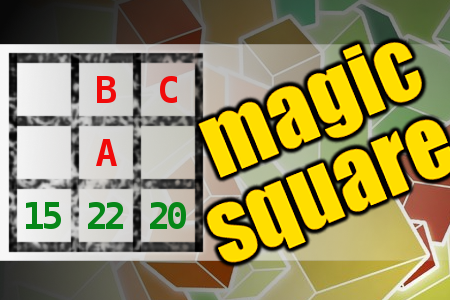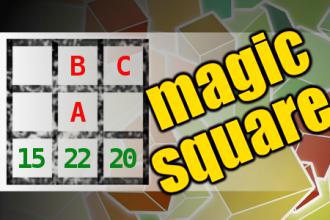MAGIC SQUARE: Calculate A*B*C
The aim is to place the some numbers from the list (7, 13, 15, 16, 17, 19, 20, 22, 24, 25, 30, 46, 56) into the empty squares and squares marked with A, B an C. Sum of each row and column should be equal. All the numbers of the magic square must be different. Find values for A, B, and C. Solution is A*B*C.Correct answers: 1
#brainteasers #math #magicsquare

The ABC's of Marriage
After being married for 25 years, a wife asked her husband to describe her.
He looked at her carefully, then said, 'You are A, B, C, D, E, F, G, H, I, J, K.'
'What does that mean?' she asked suspiciously.
He said, 'Adorable, Beautiful, Cute, Delightful, Elegant, Foxy, Gorgeous and Hot!'
She beamed at him happily and said: 'Oh, that's so lovely! But what about I, J and K?'
'I'm Just Kidding!'
(The swelling in his eye is going down and the doctors are fairly optimistic about saving his genitals).

